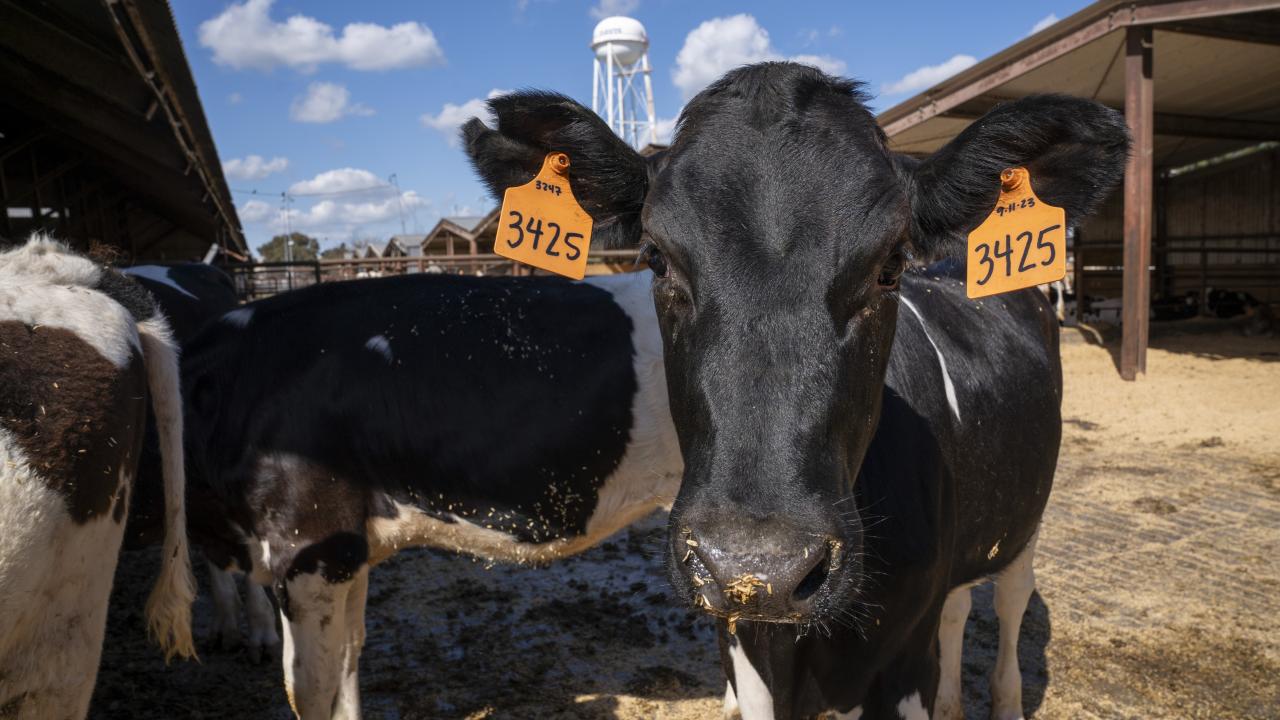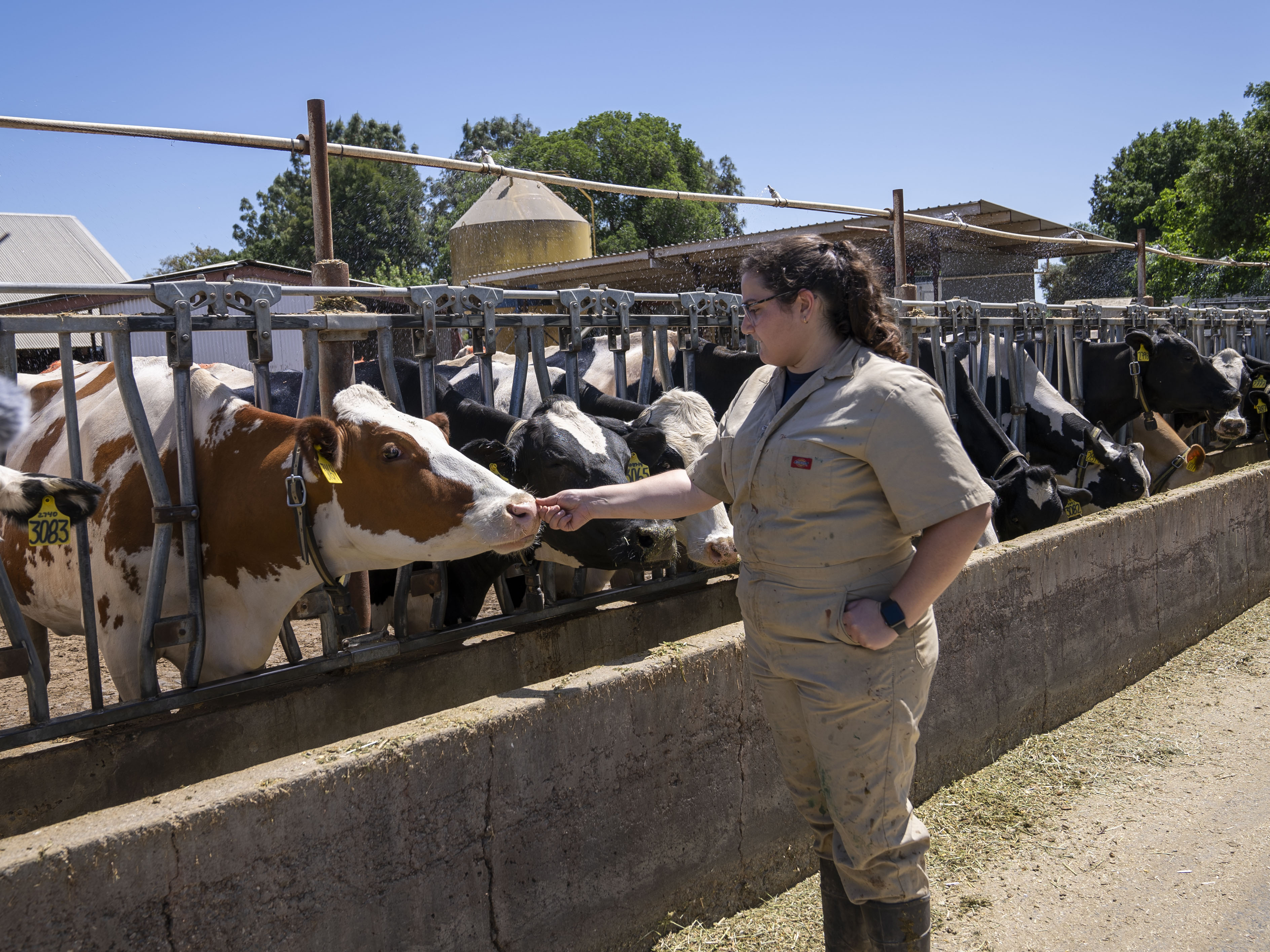
Research Explores Additive to Reduce Methane Emissions from Manure
In California’s ongoing fight against greenhouse gas emissions, manure management in the livestock sector remains a major challenge—but emerging solutions like the manure additive Eminex® may offer a possible solution moving forward.
A study by University of California, Davis researchers in the CLEAR Center, which was published in Sustainability, an open access journal from the Multidisciplinary Digital Publishing Institute (MDPI), aimed to explore how Eminex® affects greenhouse gas emissions in both fresh dairy slurry and lagoon wastewater.
California and Methane: The Need to Explore
California is the nation’s leading dairy state and has been since 1993, when it surpassed Wisconsin in milk production. Today there are more than 1,000 California dairy farms, which are home to around 1.72 million milk cows. Along with all of these cows comes something else: their byproduct, cow manure.
Many California dairy farms use anaerobic lagoons as their primary form of manure storage. These lagoons can lead to the formation of greenhouse gases (GHGs) like methane (CH4), and carbon dioxide (CO2), due to the anaerobic decomposition of volatile solids in manure. Some dairy farmers have decided to build new structures, like anaerobic digesters or specialized manure management facilities, as they try to mitigate their emissions now and in the future, with California mandating a 40% reduction in methane reductions by the year 2030.
Another way to mitigate greenhouse gases could be manure additives. While they can be expensive, they may still be more affordable and require less financial investment than other options.
Researchers from the CLEAR Center at UC Davis as well as from the Department of Animal Science and the Department of Biological and Agricultural Engineering at UC Davis set out to research the effects of Eminex® which is a brand name for a product used for manure treatment that helps reduce greenhouse gas emissions, particularly methane, from livestock manure. Eminex® is a granulated product that is produced by the Alzchem Group in Germany. It was first tested in a dairy slurry under a temperature controlled, sealed anaerobic system and findings were promising as results showed that it did reduce greenhouse gases.
“We were interested in exploring it for the potential that a manure additive could have, in reducing greenhouse gas emissions associated with manure-based emissions,” said Alice S. Rocha, a Ph.D. graduate student at the time of the study and the lead investigator on the research. “Because right now, the way the industry operates, if you want to address manure emissions, you have options, which is an excellent thing. But a lot of those options are very financially intensive, so you think of, anaerobic digesters, or even solid liquid separators, those are going to require a substantial capital investment up front, and some farmers don't have the financial means themselves to afford those options.”
Exploring a Solution to Greenhouse Gases
Researchers tested Eminex® in both dairy manure slurry and dairy manure lagoon wastewater.
Manure slurry is a mixture of liquid feces and urine. Slurry is often stored in tanks or lagoons before being spread on fields to improve soil quality and provide nutrients for crops.
A manure lagoon is a large, man-made pond or storage area designed to hold and treat liquid animal waste, typically from livestock farms like dairies. The lagoon allows for the anaerobic breakdown of manure by microbes, which helps reduce the volume and odor of the waste. It also helps to control greenhouse emissions and can be used to store the waste until it's ready to be applied as fertilizer to fields. The lagoon is often lined to prevent contamination of groundwater and is carefully managed to minimize environmental impacts.

The objectives of the research were to twofold: (1) to determine the efficacy of Eminex® in reducing greenhouse gases and other gaseous emissions from fresh dairy slurry and dairy lagoon wastewater and (2) to determine the physical characteristics of the slurry and lagoon wastewater after receiving the additive.
Eminex® was applied to fresh dairy slurry and to dairy lagoon wastewater in two separate experiments (experiment 1 and experiment 2, respectively). In each experiment, in addition to a control (untreated) sample, two different doses of Eminex® were used—a full does (the manufacturer’s recommended dose) and a smaller dose (50% of the manufacturer recommended dose).
“The reason for this was cost. Manure additives like Eminex® can be pricey, so if emissions could be reduced by just half a dose of the additive being used, that could be a significant savings for dairy farmers,” said Rocha.
For the slurry experiment, dairy feces and urine were collected from lactating dairy cows at the UC Davis Dairy Research Facility over two days, one week apart.
The collected waste was then mixed into a slurry by combining the feces and urine in a specific ratio. Then, it was blended for 60 seconds. The slurry was then placed in six ceramic bowls, and each bowl was randomly assigned a treatment prior to starting the experiment. There were two treatments: (1) low dose of Eminex® and (2) a high dose Eminex® In addition, an untreated control was also tested.
After the Eminex® application, the slurry was mixed for an additional 60 seconds to allow for proper distribution, then each bowl was immediately placed under a flux chamber, which is a device used to measure the rate of gas emissions (flux) from a surface, like soil or a liquid, into the atmosphere. The same protocol for feces and urine collection and treatment administration was repeated a week later.
For the lagoon wastewater experiment, it was collected in batches from the uncovered lagoon of a 1000-head commercial dairy in Solano County, CA. Lagoon wastewater was collected on three separate days every two weeks, then the lagoon wastewater was transported back to the UC Davis Feedlot Research Facility to begin emissions monitoring experiments. Batches of lagoon wastewater were dispensed into four, stainless steel barrels per collection batch. After filling, each barrel was homogenized for 60 seconds.
After applying Eminex®, barrels were mixed for another 60 seconds. The first four filled barrels were covered by flux chambers to start emissions monitoring. The same collection and treatment procedure above was repeated until 12 barrels were filled, across three collections, with four barrels filled per collection. Samples were collected from each barrel to analyze on day 0, 14, 28, and 56 of the trial.
“The time scale was meant to reflect [manure waste storage] as much as we could within the limitations of a small research trial and not actually working on a commercial farm,” Rocha said. “And while we were doing this, we were monitoring for carbon dioxide, methane, nitrous oxide, and ammonia emissions.”
Research Unveils Key Findings
Overall, the results of the study were promising for researchers.
Eminex® demonstrated consistent, strong mitigative effects for GHGs in slurry and lagoon wastewater. Eminex® reduced CO2, CH4 and ammonia (NH3) in fresh dairy slurry and lagoon wastewater, however Eminex® seemed to be less effective at suppressing CO2 in lagoon wastewater compared to dairy slurry. The difference might be due to the experimental setup and variations in the slurry and wastewater compositions. Plus, the experiments were done during a hotter time of year, and the barrels had a larger surface area for emissions, both of which could affect results.
“This study was happening during the summer in California, where we had weeks that it was 110 degrees outside and we were still getting substantial reductions in greenhouse gas production,” said Rocha. “That is unheard of, because generally higher temperatures mean higher gas production so that was pretty incredible to see.”
Methane emission across treatments decreased over time in the low dose (30.1 % lower emissions) and high dose slurry (30.4% lower emissions). In lagoon emissions of methane, emission rates for the low does and high dose decreased emissions by 80.9% and 85.1%, respectively.
Eminex®’s efficacy in different manure types opens it up for use by most dairy farmers. As shown in slurry and lagoon wastewater, there were no big differences between the high and low doses, meaning that substantial reductions in emissions can still be achieved with lower doses, which is encouraging because it could be a cost-effective way to mitigating greenhouse gases. However further research is needed to determine exactly how low the dose can be to successfully maintain emissions reductions.
“The next steps would be a titration study to discover if a lower dose would prove successful,” Rocha said. “And further research is needed at a commercial farm, because one of the big things that we weren't able to replicate is in a lagoon, where it's constantly being inundated with more manure. So, if this product is designed to only be applied once every three to six months, is it going to hold up if it's constantly having to deal with more organic matter, more manure entering that system?”
Overall, the hope is that by reducing methane emissions and improving manure management practices, Eminex® and products like it can help support sustainable farming and positively contribute to reducing the environmental impact of animal agriculture here in California, and in communities around the world.
“I think manure additives as a whole, Eminex® included, are very important for farmers to use to continue advancing sustainability for manure management,” Rocha said.” It's like we say: this could be one of the tools in the toolbox for farmers to use.”
Rocha added that, “From a research standpoint, that's all you really want out of your career as a researcher, is to do something substantial that you'll you have confidence in a product that you worked with, that you were like, wow, this could actually work. This could actually make a difference.”
(Photos by Kevin Ulrich/UC Davis)
